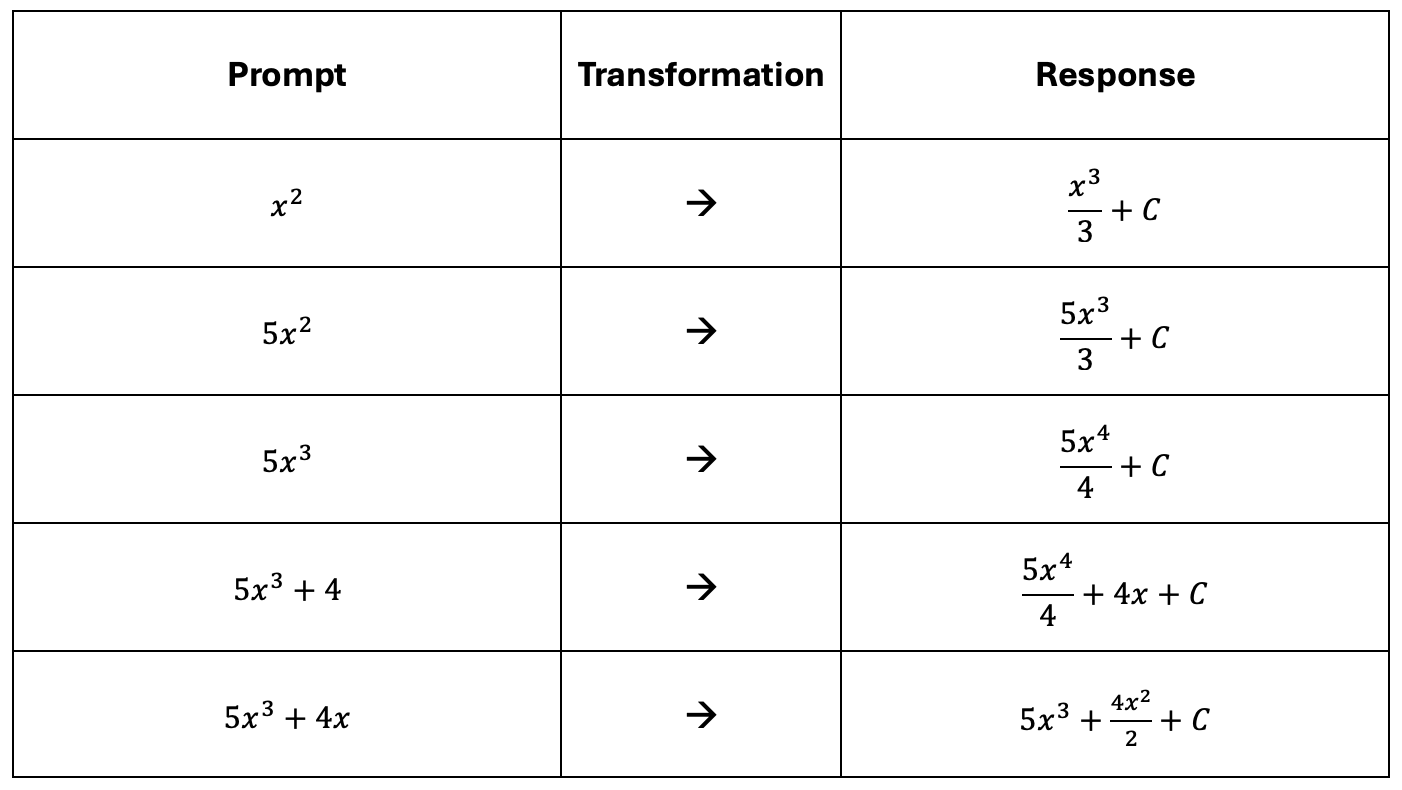Concrete Example - Teaching Integration
How have other teachers applied the Unstoppable Learning system to teaching A Level integration, and how and why did it go wrong?
Podcast is AI generated, and will make mistakes. Interactive transcript available in the podcast post.
How to design the instructional sequence for a transformation is explained here:
And the initial testing sequence is explained here:
In this post we’ll look at a concrete example of creating a transformation sequence for A Level integration, offered by Sianna Clarke, Head of Maths at Ilfracombe Academy, part of the Athena Learning Trust.
The sequence Sianna designed looked something like this:
It has minimal difference from one example to the next, ‘just change one thing.’
In theory it should work well. In practice, it didn’t; and at the request of her very bright A Level students, Sianna chose to return to how she would have taught it previously - start with a trinomial quadratic and just tell them to add one to the power, divide by the new power.
It’s how I learnt it at school, it usually works well for this very simple concept, and indeed it worked perfectly well here as well.
So:
Why did the transformation sequence fail?
And does it have anything to offer over a more traditional approach, given that that worked well enough?
When we dug into it together, we found three reasons - in hindsight - it predictably failed; and while the traditional approach worked well enough, the transformation sequence might yet have a little something extra to offer.
Those three reasons related to:
The specific choice of examples
The progression of examples
The presentation of examples
They’re also connected to I do / We do, so if you missed this one, it might be worth a quick skim:
(1) Choice of Examples
First, the specific choice of examples.
As a rule of thumb, 0, 1 and 2 are special cases. 0 is the identity of addition. 1 is the identity of multiplication. 2 defines the even numbers.
0 and 1 are also often present covertly, like: this:
Instead of this:
Resulting in secrets we fail to reveal to our students.
So, I might have chosen initial examples like these instead:
Keep reading with a 7-day free trial
Subscribe to Unstoppable Learning to keep reading this post and get 7 days of free access to the full post archives.









